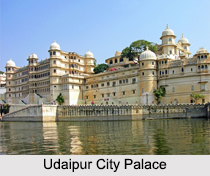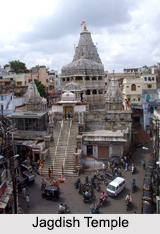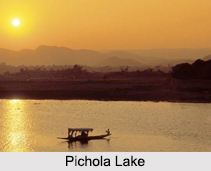 Places of Interest in Udaipur comprise of palaces, lakes and gardens. Udaipur was established as the capital of the Rajputs by Maharana Udai Singh in medieval era. For tourists it will be an enjoyable experience to witness these charming monuments of Udaipur. Essentially Rajput in style the places of interest in Udaipur are historically significant too. The Sisodiya Kings were known for their attachment to their roots and the palaces were built accordingly. Temples and gardens were an inevitable part of these historical palatial buildings.
Places of Interest in Udaipur comprise of palaces, lakes and gardens. Udaipur was established as the capital of the Rajputs by Maharana Udai Singh in medieval era. For tourists it will be an enjoyable experience to witness these charming monuments of Udaipur. Essentially Rajput in style the places of interest in Udaipur are historically significant too. The Sisodiya Kings were known for their attachment to their roots and the palaces were built accordingly. Temples and gardens were an inevitable part of these historical palatial buildings.
Palaces in Udaipur
Palaces in Udaipur comprised of Udaipur City Palace, Sheesh Mahal, Moti Mahal, Bagore Ki Haveli, Bada Mahal and many others. The most remarkable palaces in Udaipur are the City Palace and the Lake Palace. City Palace of Udaipur is an oldest monument. This palace is surmounted by the Rajput architectures of ancient era. It was constructed by Maharana Udai Singh II. Now it is a museum. It attracts thousands of tourists throughout the year. Sheesh Mahal is a palace of exquisite beauty. The entire "Mahal" has been created with pieces of glass. Such innovative thinking and style will completely astonish the tourists. Moti Mahal is a palace of exquisite architecture. This palace is real example of Rajasthani architecture and here one can also find the cultural amalgamation of Rajasthan.
 Museums in Udaipur
Museums in Udaipur
There are many museums in Udaipur. Some of the popular museums in Udaipur are Maharana Pratap Museum, City Palace Government Museum, Crystal Gallery, Shilpgram Museum, Bharatiya Lok Kala Mandal, Vintage Collection of Classic Cars Museum, Udaipur Solar Observatory, Udaipur Art Villa, B. G. Sharma Art Gallery, Ahar Museum and Padmawati Arts and Handicrafts. These museums depict the royal and luxurious life of Rajputs from the Hindu era to the Independence of India in 1947.
Temples in Udaipur
Some of the prominent temples in Udaipur are Eklingji Temple, Srinathji Temple, Sas-Bahu Temple, Nimach Mata Temple and Jagdish temple These temples show the elegance in traditional Hindu art and Hindu architecture and the aura of Rajput sculptures that was reached at its height in Mughal era.
Lakes in Udaipur
Most of the water bodies in Udaipur are made artificially for the permanent water resources to the villages of Rajasthan. These lakes were built under the commission of Maharanas of Udaipur. Some of the lakes in Udaipur are Pichola Lake, Fateh Sagar Lake, Jaisamand Lake, Dhebar Lake, Udai Sagar Lake and Goverdhan Sagar Lake.
Gardens in Udaipur
Gardens in Udaipur are the major tourist attractions. These include Saheliyon Ki Bari and Sajjan Niwas or Gulab Bagh. These gardens with the water bodies are established as the retreat for the royal ladies of Udaipur. Now, these are the popular tourism attractions with the eco tourism spots.



















